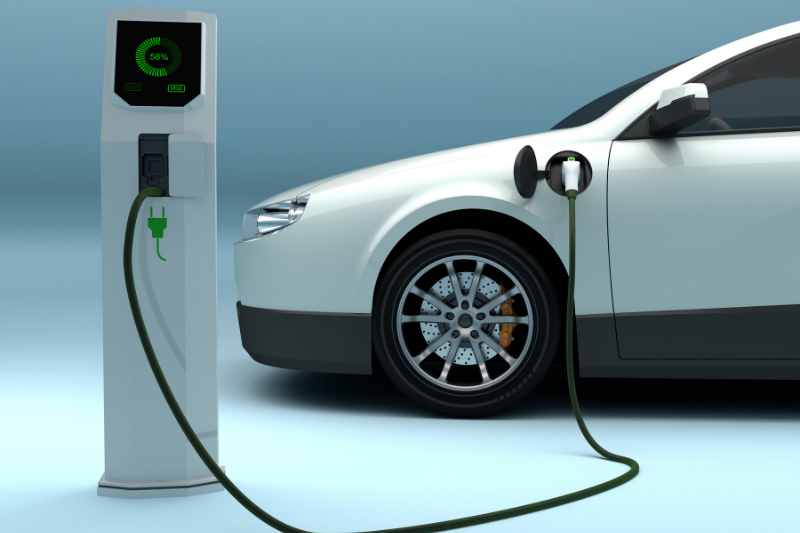
09 Aug Why Amazon and Tesla Can Improve Their Free Cash Flow
Amazon.com Inc (NASDAQ: AMZN) and Tesla Inc (NASDAQ: TSLA) are two closely watched companies by the investment community. I also happen to have investment exposure to both of them.
For the first six months of 2021, the two companies reported relatively poor free cash flows. Amazon reported negative free cash flow and Tesla’s free cash flow margin, while much higher than in the past, was still just 4% of revenue.
Although the free cash flow numbers for both companies may seem disappointing at first, there are signs that point to significant margin expansion in the future. To understand why, we need to know the difference between maintenance and expansion capital expenditure.
Two types of capital expenditures
Free cash flow is calculated by deducting capital expenditure from cash flow from operations.
Capital expenditure is cash spent on assets that will only be expensed in the future.
I broadly classify capital expenditure into two categories: Maintenance and expansion. Maintenance capital expenditure is money that is spent on assets to replace existing infrastructure to maintain a company’s current operations. Expansion capital expenditure is cash spent on new assets to expand the business.
In any given period, I monitor whether a company’s capital expenditure is mostly maintenance or expansionary in nature. If it’s the latter, then the company can improve its free cash flow margin when expansion works are complete. Amazon and Tesla both fall into this category.
Amazon
Amazon reported a negative US$0.3 billion in free cash flow in the second quarter of 2021. It also reported a negative US$8 billion in free cash flow in the first quarter of 2021.
This resulted in an ugly-looking trailing twelve-month free cash flow profile that dropped to US$12 billion from US$32 billion a year ago. The disappointing free cash flow numbers were largely due to a significant increase in capital expenditure to US$47 billion from just US$20 billion a year ago.
These figures may look concerning at first but the reality is different. Amazon’s capital expenditure was mostly for expanding its fulfillment network and growing its cloud computing business, Amazon Web Services (AWS). In Amazon’s latest quarterly filing, the company explained:
“Cash capital expenditures… primarily reflect investments in additional capacity to support our fulfilment operations and in support of continued business growth in technology infrastructure (the majority of which is to support AWS), which investments we expect to continue over time.”
In addition, Amazon’s free cash flow was also impacted due to fluctuations in working capital needs which I believe are non-recurring in nature.
Tesla
Similarly, Tesla’s free cash flow looks set to improve after it completes its expansion phase. Tesla is in the midst of building two new production factories in Texas, USA and Berlin, Germany. The company is also expanding its factory in Shanghai, China. These expansion programs involve significant capital expenditure but will lead to higher production capacity for Tesla in the future. Tesla wrote in its recent quarterly filing:
“Cash flows from investing activities and their variability across each period related primarily to capital expenditures, which were $2.85 billion for the six months ended June 30, 2021, mainly for construction of Gigafactory Texas and Gigafactory Berlin and expansion of Gigafactory Shanghai and $1.00 billion for the six months ended June 30, 2020, mainly for Model Y production at the Fremont Factory and construction of Gigafactory Shanghai and Gigafactory Berlin.”
From an operational point of view, Tesla is, in fact, handsomely cash flow positive already. In the first six months of 2021, Tesla reported US$3.77 billion in operating cash flow from US$22.3 billion in revenue, good for a 17% operating cash flow margin.
As Tesla scales and its expansionary capital expenditure become a smaller percentage of revenue, I believe that its free cash flow margin will likely approach 10% or even more.
Closing thoughts
Although the amount of free cash flow produced by a company may be a good broad indicator of the company’s performance, the devil is in the details. For both Amazon and Tesla’s case, free cash flow has been disappointing in recent times but I think in the long run both companies look set to increase their free cash flow significantly
Amazon is spending heavily on expanding its e-commerce fulfillment network and its AWS infrastructure and its working capital requirements have increased significantly, which sets it up nicely for growth.
Similarly, Tesla’s free cash flow has been low due to significant spending on building new factories and expanding existing ones. Although I expect Tesla to continue building new factories in the future, the company will eventually reach a point of significant scale where expansion capital expenditure becomes a much smaller drag on free cash flow.
Note: An earlier version of this article was published at The Good Investors, a personal blog run by our friends.
Disclosure: Jeremy Chia owns shares of Amazon and Tesla.
